Prior to selecting the piano as my primary instrument, I had a deep affection for the saxophone. It was during the 1990s, a time when I perceived saxophonists as the epitome of coolness in the jazz scene. They effortlessly filled concert halls and achieved numerous platinum records!
To be honest, my exposure to the saxophone mostly revolved around pop and smooth jazz artists such as Kenny G, David Sanborn, and Dave Koz. However, everything changed when I attended a jazz festival in Boston and witnessed the awe-inspiring performance of the legendary Michael Brecker.
He unexpectedly brought out a synth that resembled a plastic flute and began playing it with the intensity and virtuosity reminiscent of Eddie Van Halen’s distorted electric guitar. I turned to one of my saxophone peers and inquired, “What is that?” To which he responded, “That’s an EWI.”
Top pick
Roland Aerophone Pro AE-30
The quality of their effects is truly top-notch, as expected from Roland’s professional-level studio effects.
Editor’s choice
Akai Professional EWI 5000
The potential for sound design is limitless. Whether creating lush pads or powerful dubstep leads.
Best value
Yamaha YDS-150
The synthetic reeds are another cost-saving feature, eliminating the need for frequent expensive reed replacements.
The EWI serves as a synthesizer tailored for woodwind musicians, offering an exceptional avenue for artistic expression. Let us delve into a selection of the finest options available and discover the remarkable sonic landscapes that can be crafted with these instruments.
Best Electronic Wind Instruments Reviews
1. Roland Aerophone Pro AE-30
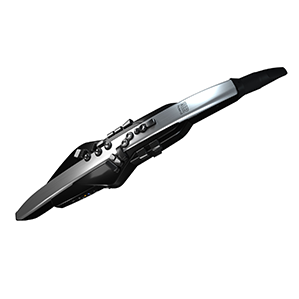
Roland truly excels in creating standout products, and the Aerophone Pro AE-30 is a prime example of their expertise.
During my recording session with it, I was immediately struck by the remarkable feel of the keys. They possess an authentic saxophone action and are thoughtfully arranged, making the transition for sax players seamless and effortless.
But Roland doesn’t stop there. Not only does the Aerophone Pro AE-30 offer full USB MIDI control, but it also boasts Bluetooth MIDI functionality, allowing for instant playability with soft synths. Additionally, with over 300 internal sounds, you can start playing right away without any delay.
The quality of their effects is truly top-notch, as expected from Roland’s professional-level studio effects.
One feature that I particularly value is the headphone output. It provides a convenient way for me to practice or warm up before a session or performance without disturbing others.
However, my absolute favorite feature has to be the breath sensor and its interaction with Roland’s superNATURAL modeling technology. This combination allows for an unprecedented level of expression, bringing out nuances and subtleties from both sampled and modeled sounds.
As someone heavily involved in film music, the ability to realistically write flute and oboe melodies for demos is simply incredible. Furthermore, it seamlessly integrates with Kontakt sample libraries, breathing new life into my orchestral libraries.
The only minor drawback I have encountered so far is that due to the lifelike action, the keys can occasionally stick. However, it’s worth noting that even real sax keys can experience this issue at times.
2. Akai Professional EWI 5000

The Akai EWI 5000 represents a significant improvement over the EWI 3000, a device famously used by the legendary Michael Brecker. Unlike the Roland saxophone layout controller, the EWI 5000 stands out as a truly innovative wind instrument.
I am the proud owner of one of these instruments, and I must say it is the most naturally expressive EWI I have ever had the pleasure of playing. The key placement allows for seamless portamento octave glides when using synth patches.
Furthermore, the MIDI timing is impressively precise. When connected to my Minimoog Model D reissue, there is no noticeable latency when playing lead parts. The EWI 5000 was specifically crafted to produce unique and captivating textures.
The potential for sound design is limitless. Whether creating lush pads or powerful dubstep leads, this instrument allows for a level of creativity not achievable with a traditional keyboard.
In addition to a breath sensor similar to the Roland, the EWI 5000 features a distinctive Bite sensor that enables users to manipulate the sound in a manner reminiscent of bending a reed on instruments like the saxophone or clarinet.
I often showcase this instrument during live DJ performances, taking advantage of its wireless audio capabilities and rechargeable battery for an engaging experience on the dance floor. The element of surprise adds to the excitement, as listeners are often unaware that the Minimoog lead they are hearing is being played live until I unleash my full creativity.
One minor drawback is the extensive sound library provided by Sonivox. While I am not particularly fond of their soft synths and libraries, I have found alternatives such as Spitfire Audio to be more to my liking. Nonetheless, the versatility of MIDI allows for endless possibilities in sound creation.
3. Yamaha YDS-150
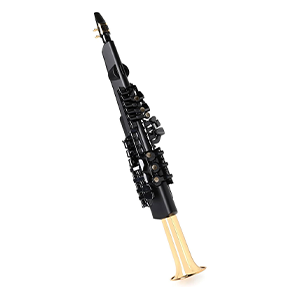
The Yamaha YDS-150 stands out as an impressive hybrid instrument that seamlessly blends acoustic and digital technologies. It represents a significant advancement from traditional Electronic Wind Instruments (EWIs).
What sets this hybrid saxophone apart is its authentic saxophone feel, which is enhanced for an even better playing experience. Gone are the days of struggling with saxophone practice, especially in less-than-ideal settings like apartments or without professional equipment.
One standout feature is the inclusion of a volume control on an acoustic instrument, a truly innovative addition. This feature would have been a game-changer during my college years, allowing me to practice without disturbing neighbors.
Additionally, the tuning adjustment mechanism is a game-changer, particularly for playing soprano saxophone. Keeping the instrument in tune used to be a challenge, but the YDS-150 is expertly designed to address this issue.
The synthetic reeds are another cost-saving feature, eliminating the need for frequent expensive reed replacements. With its battery-powered operation, USB adapters, and Bluetooth connectivity, this instrument offers versatility for playing along with favorite tracks via smartphone pairing.
Even for those still using traditional acoustic saxophones, the YDS-150 is a valuable tool for practice. The effects section could be improved, as Yamaha Reverb lacks the lush quality found in Roland’s reverb effects. As a workaround, I often bypass the effects section and add effects later in my Digital Audio Workstation (DAW).
4. MOOER WI100 Mini Electric Saxophone
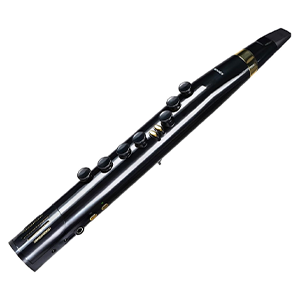
The preset sounds on some instruments can be quite lackluster, but surprisingly, they can be so bad that they actually turn out to be good!
I had the opportunity to experiment with the Mooer Electric Saxophone, and I found myself quite impressed by it. While the sounds may not be the most authentic, they do remind me of the toy keyboards from the ‘80s that I still use to create intentionally quirky acoustic sound imitations. The Casio Portasound is a prime example of this.
In my role as a sound designer for film music, I am constantly searching for unique sources that I can run through various effects such as guitar pedals, synthesizers, filters, hardware saturators, reverb, and delays.
I decided to try out the Mooer because it offers some fantastic original sounds that can be manipulated to produce intriguing electronic textures.
Although I’m not sure if this was the intended use, it actually works quite well. With the expressive qualities of an EWI and a playing style reminiscent of an ethnic flute, the presets like male chorus, female chorus, and bamboo flute can lead to the creation of captivating sounds.
Furthermore, I appreciate its compact size and portability. I bring it along to my sessions because I can easily incorporate it into some fascinating FX chains while still engaging with an expressive instrument, providing a different experience from simply playing samples on a keyboard.
5. Roland Aerophone AE-01
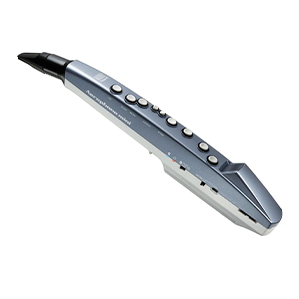
The Roland Aerophone AE-01 is an incredibly impressive instrument that may not immediately catch your eye compared to other electronic wind instruments (EWIs) available on the market. However, it serves as an excellent tool for beginners in wind instruments or those who simply want to learn the fundamentals of playing an EWI.
As a more affordable and lightweight alternative to its professional counterpart, the AE-30, the AE-01 may not possess all the extravagant features of the AE-30. Nevertheless, its onboard tones and presets still produce exceptional sound quality, adding a delightful touch to your recordings or musical compositions. Additionally, its portability is a major advantage, allowing you to carry it with ease wherever you go.
Although I have yet to purchase this instrument, I have had the opportunity to play it a few times during my DJ sets, and it performed flawlessly. All I had to do was connect it to my system via Bluetooth, and I was able to effortlessly jam away.
The built-in speaker of the AE-01 is surprisingly decent, making it convenient to amplify through a microphone.
It brings to mind the Wurlitzer 200A keyboards, originally designed for students with subpar speakers to aid their practice during music class. Interestingly, these keyboards have now become legendary electric pianos, utilized in recordings by renowned artists ranging from Supertramp to the Beatles.
One technique I employ with the AE-01 is to amplify the included speaker using a microphone. This creates a captivating lo-fi sound that captures some of the mechanical clicking noises. I then enhance the sound further by applying various Roland effects.
Final Word
There is a prevailing notion that any electronic rendition of an acoustic instrument aims to supplant it. This was evident when synthesizers first emerged, and piano players would critique the synthetic piano sound, claiming it lacked authenticity.
The same sentiment applies to this specific instrument. When I witnessed Michael Brecker utilize an electric guitar sample with it, he wasn’t attempting to mimic a traditional guitar player. It went beyond that.
His intention was to demonstrate how he could express himself using diverse sounds, particularly innovative and imaginative sampled tones.
This is precisely why I have a deep appreciation for synthesizers and EWIs. I perceive them as remarkable tools within our creative arsenal!


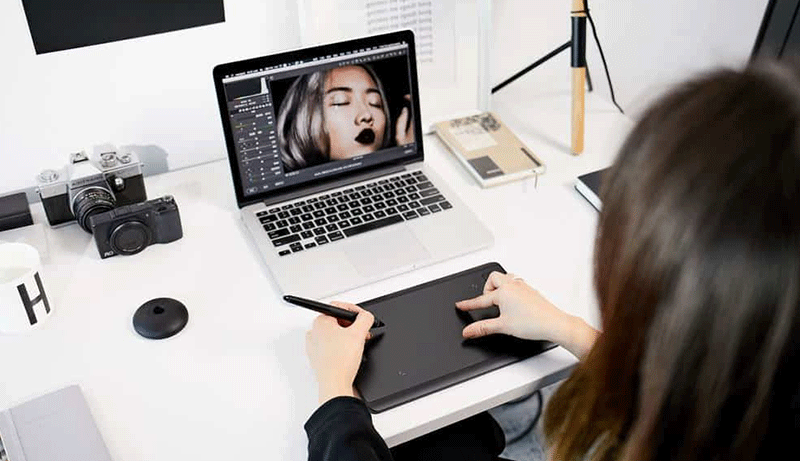


Leave a Reply